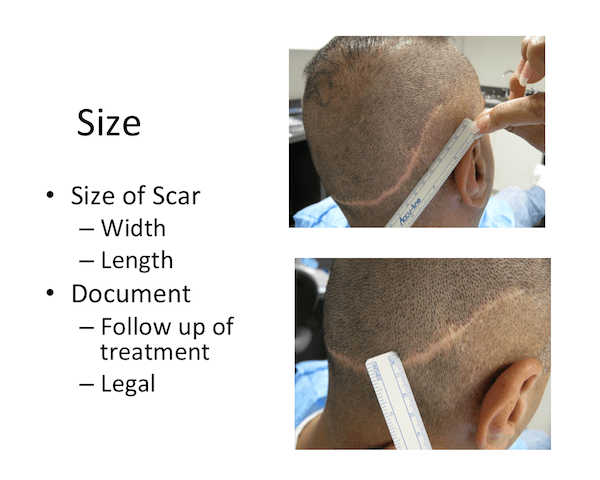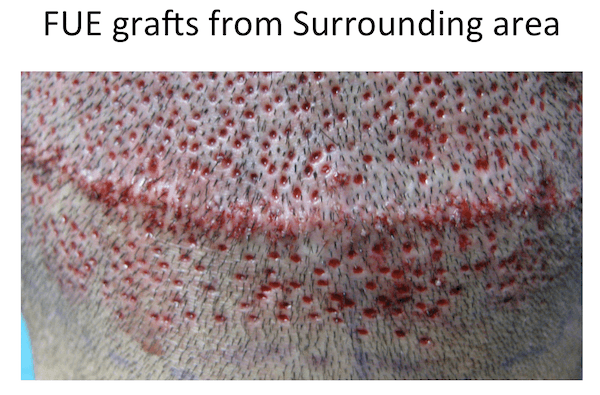The Scalp Scar Revision – Revisited

Hair transplant surgeons have been dealing with scalp scars in strip hair transplants since the invention of hair transplant techniques. There are other ways patients may end up having a linear scar after other scalp procedures and they include neurosurgical operations or trauma to the head. Although most scars are hidden in the native hair of the patient, some scars may become exposed to the public due to their proximity to the hairline or when a patient keeps his hair short.
Depending on the size, type, and location of any scars on the scalp, surgeons may have to use different techniques to minimize their appearance. We have created an algorithm that is effective for hair transplant surgeons, or other cosmetic surgeons, to use in order to determine the most effective surgical or medical methods to address scalp scars.
Among the factors that are considered for scalp scar revision are the prior history of scar occurrence on the body and the reaction the patient has to injuries on other parts of the body. A proper physical examination can reveal what proportion of the visibility of a scar is due to stretching or hypertrophic reaction and what portion has to do with hair transection.

Any scars that are wider than what is normally expected might have to do with some component of stretching. To improve the visibility of stretched scars, the surgeon needs to use a technique that works to minimize the contrast between the hairless scar and the neighboring areas of the scalp by transplanting hair inside the scar.
We will discuss trichophytic closure and its variants such as upper, lower, double edged or partial trichophytic closure. In addition, we will evaluate the indications of each method. We will also evaluate the requirement for a FUE procedure that might be performed in addition to trichophytic closures in select scars. We created a system that makes it easy for surgeons to assess the necessary surface of scalp that is needed to be deepithelialized in order to bring the adequate amount of hair into the scar.
Every cosmetic surgeon should be familiar with, and knowledgeable about, cosmetic products or non-medical methods that can be used to improve the appearance and size of scars. We evaluate the role of a variety of techniques that might be used solely, or in conjunction with, surgical procedures performed to improve the appearance of scars. Some of the topics we will discuss are microfibers, foundations, and coloring agents for skin and hair or the tattooing of the scalp. We will discuss a comprehensive algorithm that can be utilized as a guide for surgeons to produce a better appearance to scars of any size, if they are inevitable, to conceal their visibility.
This publication was presented by Dr. Parsa Mohebi at the International Society of Hair Restoration Surgeries 17th Annual Live Hair Transplant Surgery Workshop in Orlando, Florida.